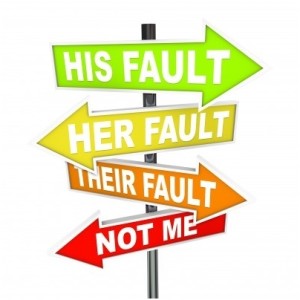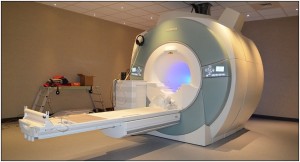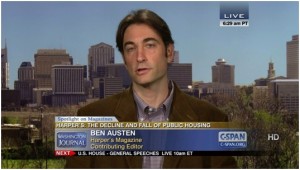Blame
Edited by NY Times contributor Ben Austen
 I am in the midst of reading the book “The Art of Happiness” written by Howard Cutler, detailing his conversations with the Dalai Lama. In it, Cutler ponders many different questions about life that he asks the Dalai Lama to give his thoughts on -these topics range from dealing with faith, to his thoughts on virtues such as compassion. Cutler uses his many patient interactions as the basis of the questions he poses. For example, he cites his interaction with a severely depressed patient and uses this experience as a springboard to question the Dalai Lama on his thoughts on the value of empathy. While the book highlights the Dalai Lama’s social intelligence, this was brought to the forefront by Cutler’s thought provoking and intelligent questions. While the Dalai Lama is clearly almost all-knowing, in my opinion there is no book without Cutler. For me, the most salient and relevant of the ideas posed in this book is the human inclination to find blame: “Often our normal tendency is to try and blame our problems on others, on external factors…It seems that whenever there are intense emotions involved, there tends to be a disparity between how things appear and how they really are.”[1]Reading this struck a chord with me. I found myself thinking about the role of blame in my ordeal. I agreed with him – if a horrible act is committed, like a rape or murder, our first thoughts are who did it, and did they catch him/her? My son has a classmate in school whose parents are divorced – the first question that sprung to my head was “Why? They are both so nice, was one of them adulterous?” My parents are both fanatics of the stock market, having the television tuned to CNBC for what seems like 24 hours a day. I’ve noticed that when the DOW or NASDAQ falls, CNBC’s anchors first look for someone or something to pin this decline on: economic indices were down or the market was reacting to a policy enacted by politicians. No matter what the stated cause is, the underlying principle is the same: blame. We, as a society, often look to blame something or someone instead of trying to be more constructive. For example, the disaster that hurricane Katrina left in New Orleans was blamed on the shortcomings of FEMA and President Bush; the universal healthcare website issues were decried as problems with the Obama Administration itself. As a physician, I have to admit that assigning blame or finding the cause is a theme across many medical school courses. We live in such a litigious society and physicians are often caught in the middle. This has forced many physicians to practice ‘defensive medicine’. This is when a test or procedure is performed in solely for the purpose of protecting the physician’s behind.[2] The U.S. is often criticized for its low ranking in healthcare (in part due to high medical care costs) -I am by no way saying the fix for our health care system is less defensive medicine but it would definitely help. Perhaps my interest in this topic was piqued because it was hammered into my head throughout my life in medicine.
I am in the midst of reading the book “The Art of Happiness” written by Howard Cutler, detailing his conversations with the Dalai Lama. In it, Cutler ponders many different questions about life that he asks the Dalai Lama to give his thoughts on -these topics range from dealing with faith, to his thoughts on virtues such as compassion. Cutler uses his many patient interactions as the basis of the questions he poses. For example, he cites his interaction with a severely depressed patient and uses this experience as a springboard to question the Dalai Lama on his thoughts on the value of empathy. While the book highlights the Dalai Lama’s social intelligence, this was brought to the forefront by Cutler’s thought provoking and intelligent questions. While the Dalai Lama is clearly almost all-knowing, in my opinion there is no book without Cutler. For me, the most salient and relevant of the ideas posed in this book is the human inclination to find blame: “Often our normal tendency is to try and blame our problems on others, on external factors…It seems that whenever there are intense emotions involved, there tends to be a disparity between how things appear and how they really are.”[1]Reading this struck a chord with me. I found myself thinking about the role of blame in my ordeal. I agreed with him – if a horrible act is committed, like a rape or murder, our first thoughts are who did it, and did they catch him/her? My son has a classmate in school whose parents are divorced – the first question that sprung to my head was “Why? They are both so nice, was one of them adulterous?” My parents are both fanatics of the stock market, having the television tuned to CNBC for what seems like 24 hours a day. I’ve noticed that when the DOW or NASDAQ falls, CNBC’s anchors first look for someone or something to pin this decline on: economic indices were down or the market was reacting to a policy enacted by politicians. No matter what the stated cause is, the underlying principle is the same: blame. We, as a society, often look to blame something or someone instead of trying to be more constructive. For example, the disaster that hurricane Katrina left in New Orleans was blamed on the shortcomings of FEMA and President Bush; the universal healthcare website issues were decried as problems with the Obama Administration itself. As a physician, I have to admit that assigning blame or finding the cause is a theme across many medical school courses. We live in such a litigious society and physicians are often caught in the middle. This has forced many physicians to practice ‘defensive medicine’. This is when a test or procedure is performed in solely for the purpose of protecting the physician’s behind.[2] The U.S. is often criticized for its low ranking in healthcare (in part due to high medical care costs) -I am by no way saying the fix for our health care system is less defensive medicine but it would definitely help. Perhaps my interest in this topic was piqued because it was hammered into my head throughout my life in medicine.
— One in a Million —
During one of my visits to Chicago, Bill (my step-father) had a tennis lesson, at which time I met the Chinese mother of a child he was coaching. Even though the courts were located close to my parents’ residence, the walk seemed particularly long on that morning. Maybe it was because it was so chilly or because it was so early. The mother of Bill’s student noticed my awkward gait and slow speech in our conversation and asked my mother in Mandarin what had happened to me. My mom’s answer was very concise yet powerful.[3] “He was unlucky and had a brain tumor.” This brought me back to the topic of blame. Until then I had coughed up my condition to bad luck. But I found myself wondering, “Is there someone to blame?”
Coincidentally, this conversation occurred at the time I was reading the ‘Blame’ section in the “Art of Happiness.” It made me reflect on how I had been searching for someone to blame for my condition: At first I blamed myself for ignoring subtle clues of a possible medical issue. Before the discovery of the tumor I would often go for jogs around the block. I began to notice during these runs that my right leg was not as easy to lift as my left. I blamed my prior back problems and continued to be in denial of my symptoms. Similarly, I rarely ever had headaches, but during medical school after staying up all night, I experienced a shooting pain from behind my right ear to my temple. Unfortunately, I began suffering the same headaches during residency. They happened to coincide in time with when we installed a new air-conditioning unit, prompting me to have my blood checked for carbon monoxide poisoning. Again, I was trying to assign blame for my headaches, but was simultaneously searching for a reason to continue to be in denial about my condition. It turns out the installation of the air-conditioner was a red herring. It does not take 4 years of medical school to realize that my symptoms might have portended a more ominous condition.
I also blamed an MRI technician who told me that I could not have an MRI performed due to my vertigo that was brought on by lying flat. I was 18 at the time and sitting on the MRI table. Due to my vertigo (the reason I was having the study) I was told I could not have it done. Since I was so young I was not well read on the various presentations of vertigo or Benign Paroxysmal Vertigo (BPV). I did know, however, that it was usually a self-limiting disease[4] that sometimes followed a viral illness, and that the Epley Maneuver[5] was successful at resolving the symptoms about 75-80% of the time. During that period, its effect on my life was limited: with my tennis, I could not look up quickly for my serve or overheads, thus I had to make sure my service toss was neither too jerky, nor behind my head; hitting an overhead was not an issue as long as I had time to look at the ball.[6] It also dictated the way I slept – I could not sleep while lying flat and had to sleep with at least two pillows under my head. At the urging of my mom, I saw an ENT specialist, who told me it was probably a condition called ‘Benign Paroxysmal Vertigo’ but wanted an MRI to be sure. Both the neurosurgeon and neurologist later told me that the vertigo symptoms I experienced were likely due to the tumor. Thinking back, I probably would have handled the situation just as my ENT had. Many people are claustrophobic and cannot undergo an MRI without pharmacologic aids; typically we know this prior to ordering the study and can prescribe some proper medications before the MRI. There are some instances where this is either not mentioned or overlooked. Typically in such instances, the patient arrives for the MRI, attempts to complete it and cannot, and tells the technician that he/she cannot complete the study due to their symptoms. After the patient makes a big enough deal of it, the physician is called, and the proper medications are ordered. I made no such stink, leaving immediately after being told that I could not complete the MRI if I could not lie flat. My brother in-law often says, “The squeaky wheel gets the grease!” He says this when a patient who complains gets their way (He is an Emergency Department physician). In this case I suppose I wasn’t ‘squeaky’ enough. The clinicians who saw me later all questioned my diagnosis, as BPV typically resolves in three months. I remember a world renowned ophthalmologist saying openly to me “You know, Benign Paroxysmal Vertigo shouldn’t last this long.” I ignored everyone who told me that this might be something more serious, and I justified my denial by focusing on the fact that the vertigo was not getting worse.
 I even blamed my neurosurgeon, thinking that a sub-total resection (a less aggressive surgery where part of the tumor is purposely left in) could have averted all these after-effects.[7] The thought here is that with a sub-total resection there would be less manipulation of the area and vital structures such as the cerebellum and its surrounding nerves would be unaffected.
I even blamed my neurosurgeon, thinking that a sub-total resection (a less aggressive surgery where part of the tumor is purposely left in) could have averted all these after-effects.[7] The thought here is that with a sub-total resection there would be less manipulation of the area and vital structures such as the cerebellum and its surrounding nerves would be unaffected.
I then realized that I was falling into the trap of the blame game. My condition is NO ONE’S fault. I just happened to win the lottery for getting a congenital brain mass—because the mass and its location are so rare, I have had difficulty coming up with studies or articles that cite the chance of having this type of mass (with the ensuing symptoms), but according to my calculations, less than one in a million people will have this mass in their posterior fossa with subsequent Posterior Fossa Syndrome. I can either search for someone or something to blame this on, or just cough it up to luck (good or bad). After much thought, I’ve realized it really doesn’t matter whose fault it is. After a tragedy, our thoughts should not be, “Who’s to blame?” It ought to be, “How can this be prevented in the future? How can others avoid the same mishap?” Instead of looking for someone or something to blame, would it not be more productive to find the source of the problem? I admit to the same human tendencies, as my first reaction to the tumor was to find out whom or what was responsible; however, this experience and introspection has motivated me to resist this urge and instead to ponder more productive thoughts. As Cutler and the Dalai Lama point out, “We tend to look for one single cause, and then try to exonerate ourselves from responsibility.”[8] I now refuse to look backwards in an attempt to place blame on someone. This type of practice is a fruitless endeavor. I invite you to join me in this way of thinking.
© November 10, 2014 by Chris Chiou www.handicappeddoctor.com
Special Thank You to Ben Austen
I would like to thank Ben Austen for taking the time to read my blog and contribute to it as an editor for this post. When my mother and stepfather Bill moved to Chicago they loved to recount Bill’s tennis experiences and talk about his various students. One of Bill’s hitting partners was a man they called Ben. My mom would tell me that Ben reminded her of me, citing his tall figure and modesty. When I began the blog I thought of Ben, as I would often read his pieces in the New York Times and Harper’s Magazine, and I very much admired him as a writer. [9] My mom suggested that Ben edit a piece for the blog. I thought this to be a great idea and immediately e-mailed him. Even amidst his hectic schedule, he responded without delay, stating that he would be happy to edit a post. Although unfortunate circumstances led to my current condition, luck brought Ben to me. Well, luck and Bill’s tennis prowess. In any case, I feel very grateful and honored to have his involvement and support.
___________________________________________________________________
1 The Art of Happiness, Riverhead Books, New York, 2009 p158
2 For example, maybe a CAT Scan is ordered when the suspicion for something to be found on this scan is low.
3 She answered in English. I am able to understand some Mandarin and speak even less.
4 Meaning it usually resolves on its own, without intervention
5 This is a technique where the patient’s head is manipulated to fix the problem.
6 If for some reason my opponent hit a quick lob, surprising me, I’d have to it go over my head.
7 When I met with Dr. Janet Osuch her first question to me was, “Did the surgeon warn you that this might happen with your recovery?” He did warn me of all the typical surgical risks: infection, excessive blood loss, death, etc, and some complications more specific to my surgery such as cerebellar mutism (many times, 10% of patients who have a surgery in a similar location to mine, patients will emerge from the surgery with the inability to speak—cerebellar mutism), and he even warned me of the possibility of the presence of an intracranial shunt (essentially a tube from your brain that serves to release any excess pressure buildup in the head). Luckily neither occurred. But the answer to her question was “no” he did not mention the possibility of developing these specific symptoms.
8 i.d p158
9 For a great read visit http://www.nytimes.com/2013/06/02/magazine/how-chicagos-housing-crisis-ignited-a-new-form-of-activism.html?pagewanted=all

